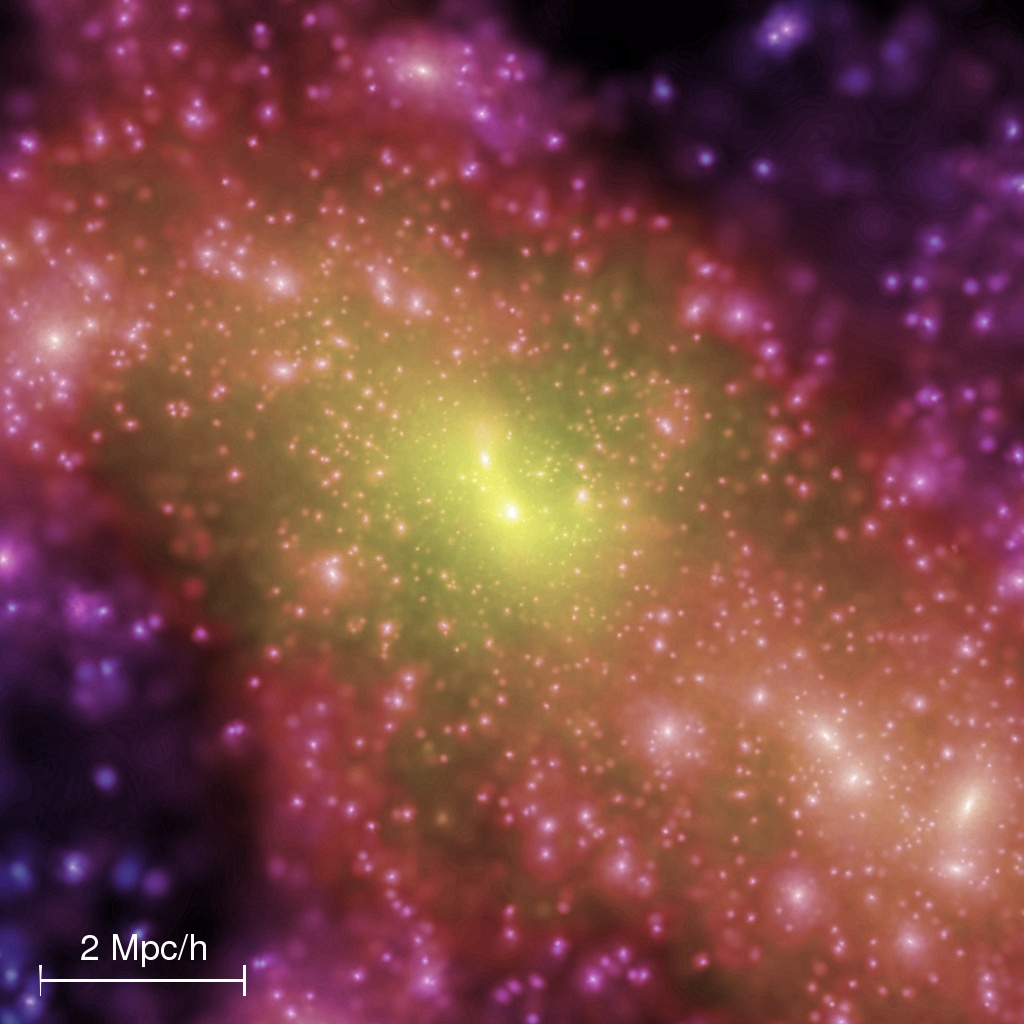Title: The total satellite population of the Milky Way
Authors: O. Newton, M. Cautum, A. Jenkins, C. S. Frenk and J. C. Helly
First Author’s Institution: Institute of Computational Cosmology, Durham University, Durham, UK
Status: Submitted to MNRAS, open access
Our home galaxy, the Milky Way, is surrounded by small, “dwarf” galaxies. Astronomers are obsessed with counting how many exist. Why? In the 1990s, we realized that the prevailing view of the universe as one primarily composed of dark energy and dark matter, called LCDM for short, predicts that the Milky Way should be surrounded by a vast horde of at least a hundred. But perplexingly, we saw only 11 dwarf galaxies. This stark discrepancy has fueled much consternation and many papers, and has been dubbed the “missing satellites problem.”
Since then, it’s been recognized that not all satellites found in simulations form bright galaxies that we can detect. The smallest satellites, in particular, can’t hold onto enough cold gas—the material from which stars are born—to form enough stars to make the galaxy detectable. In addition, bigger and better telescopes that scanned wide portions of the sky have turned up more dwarf galaxies. The Sloan Digital Sky Survey (SDSS) found almost 20 new satellites, bringing the total up to about 30. The ongoing survey called Dark Energy Survey (DES), which surveys the southern skies, has found almost 20 more, and promises to yield more. Additional discoveries by other surveys have pushed the number up to about 55—a drastic increase from the 11 originally known, but still short of 100.
But the surveys pointed to a solution. Both SDSS and DES only observed part of the sky—SDSS covered about a third, and DES will eventually cover a tenth of the sky—so what if there were more in the regions we hadn’t looked? And while both surveys were powerful, they could only see the faintest dwarfs only if they were close. While the Milky Way is about 300 kiloparsecs in size, we can only see the faintest dwarfs about 30-40 kiloparsecs away from us—only about 0.1% of the entire Milky Way volume. To determine the true number of dwarfs in the Milky Way, the authors of today’s paper attempted to correct for the number we can’t see. This is called a “completeness correction.”
To do this, the authors turned to the Aquarius Project, a simulation suite with six realizations of the Milky Way, each run with dark matter only and thus without the bright disk of stars and gas that make up the familiar, visible portion of the galaxy (which only makes up about a fifth of the mass of the galaxy, anyway). For each realization, they made a list of all the satellite galaxies they could find. The authors corrected these lists for a couple pieces of physics the simulations did not include. Satellites orbiting the Milky Way are typically stripped of mass due to the Milky Way’s greater gravitational pull. This can cause satellites to drop below the resolution of the simulation, and artificially disappear. The un-simulated disk of the Milky Way can severely strip satellites of mass to the point where they are destroyed. The authors considered how to account for these physics, and carefully added or subtracted satellites to make up for them.
With the satellite lists in hand, they could finally begin their completeness corrections. For each galaxy we’ve observed with SDSS and DES, the authors determined how much of the Milky Way volume we could see it out to, then asked, “How far down the list of satellites do we need to go before we’d see one in that volume?” After going through each observed galaxy, they got an overall total. The authors repeated this exercise, randomizing the list of simulated satellites each time for each of the 6 simulated Milky Ways in order to determine a reasonable range for the true number of satellites.

Figure 1. The number of dwarf galaxies around the Milky Way. The number that’s been observed as a function of how bright the galaxies are is shown by the black dashed line, while the number the authors extrapolated using dwarfs observed in SDSS and DES are shown via the purple line. Extrapolations with only SDSS or only DES dwarfs are shown the dotted blue and green lines, respectively. Figure taken from today’s paper.
And what did they find? The Milky Way should host about 108-195 total dwarfs. It thus looks like the missing satellites problem might not be so bad after all. With future surveys covering the entire sky, such as the Large Synoptic Survey Telescope coming online soon, we are close to being able to measure—instead of extrapolating—the total number of Milky Way satellites, and determine once and for all whether the missing satellites problem exists.
Featured image: This stunning sky map was created with the first year of data from the Gaia telescope. On the bottom right, you can see the largest dwarf galaxies of the Milky Way, the Large and Small Magellanic Clouds. If you look closely, you can find see all 11 of the original dwarfs! For more information on the image, see here. Credit: ESA/Gaia/DPAC





Trackbacks/Pingbacks